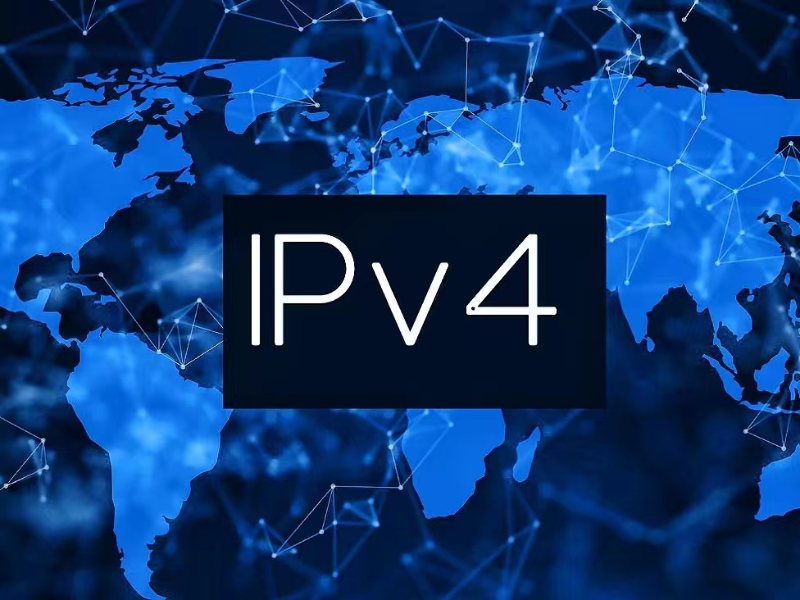- Internet protocol version 4 address, an address consisting of 32-bit binary digits that uniquely identifies a device on the Internet. IPv4 addresses can be classified into five classes.
- From uniquely identifying devices and enabling the correct routing and forwarding of network data, to supporting network management and critical network services, the design and functionality of IPv4 addresses is a core component of the modern Internet infrastructure.
- Despite the serious address exhaustion and security challenges facing the IPv4 address system, a gradual transition to a more efficient, flexible and secure network communications future is expected through the promotion of IPv6 and the exploration of emerging network technologies.
IPv4, the fourth version of the internet protocol (IP), is the first widely used protocol that forms the cornerstone of today’s Internet technology.
IPv4 concept
IP (version 4) addresses are 32-bit integers that can be expressed in hexadecimal notation. The more common format, known as dotted quad or dotted decimal, is x.x.x.x, where each x can be any value between 0 and 255. For example, 192.0.2.146 is a valid IPv4 address.
IPv4 still routes most of today’s internet traffic. A 32-bit address space limits the number of unique hosts to 232, which is nearly 4.3 billion IPv4 addresses for the world to use (4,294,967,296, to be exact).
Also read: What is an IPv4 address?
Also read: IPv4.Global wins Gold Merit Award for Telecom Business Services
IPv4 classification
We can distinguish five classes of IPv4 addresses: A, B, C, D, and E. Each of them has its own set of IP addresses.
Class A, the first bit, which is 0, spans the values 0.0.0.0 to 127.255.255.255. This class, which has 8 bits for the network and 24 bits for hosts, is designed for large networks.
Class B is intended for medium-sized to big networks. The first two bits, which are 10s, fall between 128.0.0.0 and 191.255.255.255. It also contains 16 bits for hosts and 16 bits for the network.
We use Class C for the small local area networks (LANs). The network in this class is indented using three octets. And the IP address has a range of 192.0.0.0 to 223.255.255.255, 24 network bits, and 8 host bits.
Only programs that require multicasting use Class D. That means we don’t use Class D for standard networking functions. Instead, it first three bits are set to “1,” and the fourth bit is used for “0”. Furthermore, 32-bit network addresses make up Class D addresses.
We use Class E for experimental or study-related reasons. This class of IP addresses covers the first octet values 240.0.0.0 to 255.255.255.255. A Class E IP address’s first four bits are one in binary format.
Also read: Pacific Connect: Delivering innovative IPv4 and cybersecurity solutions
The role of IPv4 addresses
IPv4 addresses ensure that each device can be uniquely identified by other devices on the network, allowing data to be sent to its precise destination. Without this unique identification, devices on the Internet would be indistinguishable from each other, making effective data exchange impossible.
The router uses the IPv4 address to determine how to transmit the packet from one network to another. It determines the best path by looking at the destination IPv4 address and using a routing table (a table that stores the network destinations and the routes on how to get to those destinations).
As the packet arrives at each intermediate node (a router), the node examines the packet’s destination IPv4 address and decides on the next forwarding path based on this information. This process is repeated several times before the packet reaches its final destination.
IPv4 addresses allow network administrators to segment large networks into several smaller, more manageable network segments. This segmentation is often referred to as subnet.
By using subnet masks in conjunction with IPv4 addresses, it is possible to determine which portion of the address is used to identify the network and which portion is used to identify a specific device.
Subnet reduces the amount of broadcast traffic within a network segment, thus improving network performance and efficiency. Network segmentation also improves security because it allows administrators to control traffic between different network segments and to set up firewalls and other security measures to isolate the network.
IPv4 addresses are also closely associated with various network services and protocols, such as dynamic host configuration protocol (DHCP) and network address translation (NAT).
DHCP servers automatically assign IPv4 addresses to devices on the network, simplifying the network configuration process. NAT technology allows multiple devices to share a single public IPv4 address.

IPv4 address challenges and future developments
The biggest challenge for IPv4 addresses is the depletion of the address space, which is clearly insufficient to meet demand at present. The actual number of addresses available is much less than the theoretical value due to a history of uneven allocation and the fact that some large blocks of addresses are controlled by a single organisation or country.
Devices in IPv4 networks are often susceptible to IP spoofing attacks, where hackers can spoof the source IPv4 address and thus spoof the receiving device. ipv4 itself does not support encryption and authentication mechanisms, which means that the data transmission itself is not intrinsically safe.
To address the address exhaustion and security issues faced by IPv4, IPv6 was designed to extend the address space and enhance security.
Using 128-bit addresses, IPv6 provides a virtually unlimited address space, theoretically enough to assign an individual public address to every device on the planet. IPV6 also has built-in support for IPsec, which enhances security during data transmission.
While continuing to promote IPv6, the network technology community is also exploring new technologies such as software defined networking (SDN) and network function virtualisation (NFV) to improve network flexibility, efficiency and security. These technologies can help networks better manage and optimise the coexistence of IPv4 and IPv6 while reducing operational costs and complexity.

